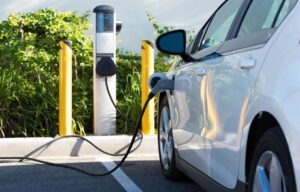Electric cars, also called VEs, are timidly entering the streets of France. Many people already use them in an electric or hybrid version. Some people plan to get some to help save the planet.
On the other hand, others opt for this vehicle to reduce their fuel costs. However, before embarking on such a project, it is necessary to take the time to know how it works. This article is more about the battery of this vehicle and how it works.
How does an electric car battery work?
Science has discovered that the outer part of atoms are made up of electrons. The evolution of research has shown that the movement of these creates an electric field at the level of matter. The battery of a car then works according to this principle which comes from the exploitation of the results.
Indeed, the battery of an electric car consists of two different terminals. These are two plates that are immersed in an electrolyte solution. The latter is composed of water and sulfuric acid which allows the movement of electrons between the plates. This movement then creates voltage in the battery and the latter provides energy.
Thus, the voltage within a battery can be higher depending on the number of elements that compose it. It transforms chemical energy into electrical energy to run the car. The mode of operation is based on charging before use and discharging during use.
This is a principle in appearance, common to all forms of batteries. However, many people are unaware that this one is much more complex. An EV battery continuously discharges and recharges.
Indeed, during the use of the car, the chemical difference between the plates is continuously lost. On the other hand, when the current is reintroduced at the level of the battery, the latter is recharged.
This is possible thanks to the vehicle’s energy recovery system. Braking creates a mechanical force which is recovered to produce electricity. This is used directly to recharge the battery that powers the motor.
Furthermore, it should be noted that this mechanism is possible if no electrical equipment is used in the car. In a thermal car, this is not a problem, but the EV runs on electricity.
This changes everything, since it is this same electricity that propels the vehicle. This implies a reduction in its autonomy if this energy is used for other purposes. The vehicle battery will be discharged and will need to be plugged into an outlet.
What are the charging options
Running out of fuel in a thermal car, you can refuel in 5 or 10 minutes at a gas station. On the other hand, the time is a little longer for the VE whose charging lasts between 4 and 10 hours. This process will allow the battery to regain the charge difference between the plates to provide electricity. Several charging options are available to the user and each of them has its advantages and disadvantages.
Doing it at home, what are the advantages and disadvantages
It is possible to recharge the battery of your electronic car at home. The first advantage that results from this is tranquility and simplicity. This is done in a private setting and you will not have to pay after each reload.
In addition, the French government encourages this mode of recharging and subsidizes the installation of domestic sockets. Note that the battery can be recharged using household outlets. This mode of reloading still has a shortcoming.
Indeed, recharging the battery in a standard socket takes a lot of time. This time varies between 8 h and 10 h for a full charge of the battery. This is why many owners prefer to charge their vehicle at night.
However, some opt to install the Wallbox at home for fast charging. On the other hand, the installation of this socket is very expensive. In addition, recharging the battery at home can increase electricity bills. Some then choose the second option.
Do it directly at a charging station
One of the advantages of opting for charging stations is speed. In 15 to 30 minutes, the battery is 80% charged. So you can have a full charge in about an hour.
In addition, some companies provide a charging space for electric vehicles. Most of the time this is free. This free service is also found at public terminals where the battery can be recharged in one hour.
In addition, service stations offer fast charging points in less than an hour. The price for a full top-up is around €5 and varies depending on the institution. However, this reloading option also has its limitations. The first drawback concerns the scarcity of terminals on the territory.
Although the state foresees their multiplication by 2030, for the moment, it is necessary to travel long distances to find one. Another drawback is the queues in front of the charging stations.
Indeed, if you are not the first to arrive, you will have to wait for your turn to reload even if you are late. One of the alternatives to get the most out of your electric car is to opt for electric self-production.
You now know how charging an electric car works. If you have one, be sure to charge it sufficiently before turning it on, especially when you plan to travel a long distance.





